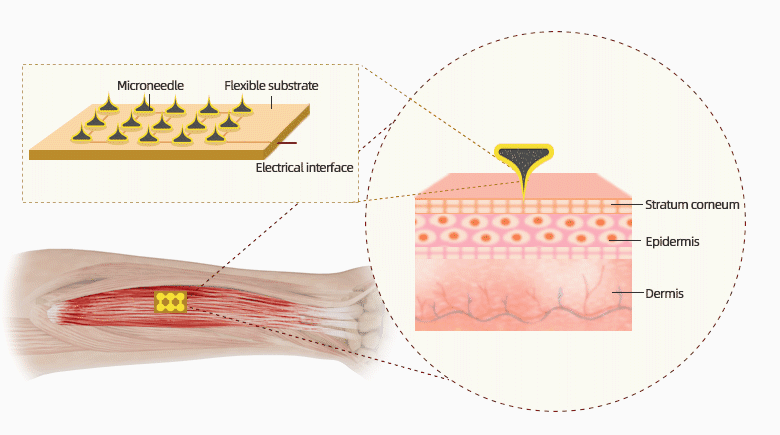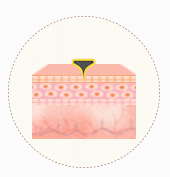
Electrophysiological signals are recorded generally by metal electrodes placed on body surface. For long term use, the signal quality may decay with the change of electrode-skin interface impedance (EII) due to the conductive hydrogel dehydration. Besides, electrodes may shift during body movements, which causes unstable signal recordings. To solve the above problems, in this work, we fabricated a type of microneedle electrode array (MEA) with a magnetization-induce self-assembly method. The well-designed microneedles (Around 550 μm in length) on the MEA could penetrate through the nonconductive stratum corneum and the high-quality signals could be recorded directly on the epidermis with low and stable EII. In addition, the microneedles could help fix the electrode on the skin to prevent unstable signal quality caused by electrode shifting.
We examined the performance of the proposed MEA for electrophysiological signal recording and compared with the commonly used dry electrode array by a series of experiment scenes on the able-bodied and amputee subjects. The results demonstrated that the MEA has lower and more stable interface impedance, especially when the electrode-skin interface is under unstable pressures. For electrophysiological signal recording, the MEA can acquire electromyography (EMG) with significantly lower noise energy, higher signal-to-noise ratio, and higher motion-classification accuracy based on the EMG pattern-recognition method. Additionally, high quality electrocardiography (ECG) can be recorded by using the MEA, where more accurate R-peaks are extracted in different scenarios. Furthermore, the above advantages of the MEA are more outstanding in dynamic conditions. Besides, there was no report about any discomfort by all the subjects during and after experiments. In conclusion, this work confirmed the improved performance of the MEA on electrophysiological signal acquisition. The results of this work have a potential to provide a support in various clinical applications of the MEA-based wearable human-machine interface technology.

